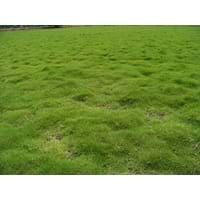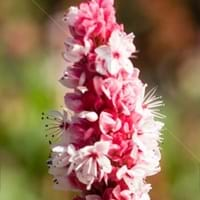Life Span
Perennial
Perennial
Type
Grass
Flowering Plants
Origin
South-Eastern Asia, Asia
Eastern Asia
Types
Korean Lawngrass , Meyer Zoysiagrass , Manilagrass
Darjeeling Red , Donald Lowndes , Superba
Number of Varieties
Not Available
Habitat
Lower slopes, Sandy stream banks
High elevation
USDA Hardiness Zone
8-11
5-9
Sunset Zone
H1, H2, 8, 9, 12, 13, 14, 15, 16, 17, 18, 19, 20, 21, 22, 23, 24
2a, 2b, 3a, 3b, 4, 5, 6, 7, 8, 9, 14, 15, 16, 17
Habit
Clump-Forming
Clump-Forming
Minimum Width
Not Available
Flower Color
Green, Light Green
White
Flower Color Modifier
Bicolor
Bicolor
Fruit Color
Non Fruiting Plant
Not Available
Leaf Color in Spring
Light Green, Dark Green
Red, Burgundy, Silver
Leaf Color in Summer
Light Green
Red, Burgundy, Silver
Leaf Color in Fall
Green, Yellow green, Gold
Red, Burgundy, Silver
Leaf Color in Winter
Gold, Tan
Not Available
Leaf Shape
Grass like
Bi-lobed
Plant Season
Spring, Summer, Fall, Winter
Spring, Summer, Fall
Sunlight
Full Sun, Partial Sun
Full Sun, Partial Sun, Partial shade
Growth Rate
Very Slow
Fast
Type of Soil
Loam, Sand
Clay, Loam, Sand
The pH of Soil
Acidic, Neutral, Alkaline
Acidic, Neutral, Alkaline
Soil Drainage
Average
Average
Bloom Time
Not Available
Summer, Late Summer
Tolerances
Drought, Salt, Soil Compaction
Light Frost
Where to Plant?
Ground
Ground
How to Plant?
Sod, Sprigging or Stolonizing
Layering, Root Division, Softwood cuttings, Stem Cutting
Plant Maintenance
Medium
Medium
Watering Requirements
weekly regular
Never Over-water
In Summer
Lots of watering
Lots of watering
In Spring
Moderate
Moderate
In Winter
Average Water
Average Water
Soil pH
Acidic, Neutral, Alkaline
Acidic, Neutral, Alkaline
Soil Type
Loam, Sand
Clay, Loam, Sand
Soil Drainage Capacity
Average
Average
Sun Exposure
Full Sun, Partial Sun
Full Sun, Partial Sun, Partial shade
Pruning
Remove damaged leaves, Remove dead branches, Remove dead leaves
Remove damaged leaves, Remove dead branches, Remove dead leaves
Fertilizers
All-Purpose Liquid Fertilizer
All-Purpose Liquid Fertilizer
Pests and Diseases
Army-worms, sod webworms
Fungal leaf spots
Plant Tolerance
Drought
Drought
Flowers
Insignificant
Insignificant
Flower Petal Number
Single
Single
Foliage Texture
Fine
Medium
Foliage Sheen
Matte
Matte
Attracts
Crickets
Not Available
Allergy
Not Defined
Diarrhea, Stomach pain
Aesthetic Uses
Beautification, Cottage Garden, Farmland, Ground Cover, Landscape Designing
along a porch, deck or patio, bank hedging, Cottage Garden
Beauty Benefits
Not Available
Skin irritation
Environmental Uses
Provides ground cover, soil erosion prevension on hill slopes
Air purification
Medicinal Uses
Unknown
bowel syndrome, Gastrointestinal disorders, hypertension
Part of Plant Used
Whole plant
Root, Root bark
Other Uses
Used as a golf course turf
Not Available
Used As Indoor Plant
Insignificant
No
Used As Outdoor Plant
Yes
Yes
Garden Design
Container, Edging, Groundcover, Lawns and Turf, Mixed Border, Rock Garden / Wall, Tropical
Container, Mixed Border
Botanical Name
ZOYSIA tenuifolia
PERSICARIA microcephala 'Dragon's Eye'
Common Name
Korean Velvet Grass
Dragon's Eye Fleeceflower, Fleeceflower
In Hindi
कोरियाई मखमल घास
fleeceflower
In German
Korean Samt Gras
fleeceflower
In French
herbe de velours coréenne
fleeceflower
In Spanish
hierba de terciopelo de Corea
Polygonum affine
In Greek
hierba de terciopelo de Corea
fleeceflower
In Portuguese
grama de veludo coreano
fleeceflower
In Polish
Not Available
fleeceflower
In Latin
Carl herba
fleeceflower
Phylum
Angiosperms
Vascular plant
Class
Monocotyledonae
Agaricomycetes
Order
Cyperales
Caryophyllales
Family
Poaceae
Polygonaceae
Genus
Zoysia Willd
Periscaria
Clade
Commelinids
Angiosperms, Core eudicots, Eudicots
Tribe
Cynodonteae
Unknown
Subfamily
Chloridoideae
Not Available
Number of Species
Not Available
Season and Care of Korean Velvet Grass and Fleeceflower
Season and care of Korean Velvet Grass and Fleeceflower is important to know. While considering everything about Korean Velvet Grass and Fleeceflower Care, growing season is an essential factor. Korean Velvet Grass season is Spring, Summer, Fall and Winter and Fleeceflower season is Spring, Summer, Fall and Winter. The type of soil for Korean Velvet Grass is Loam, Sand and for Fleeceflower is Clay, Loam, Sand while the PH of soil for Korean Velvet Grass is Acidic, Neutral, Alkaline and for Fleeceflower is Acidic, Neutral, Alkaline.
Korean Velvet Grass and Fleeceflower Physical Information
Korean Velvet Grass and Fleeceflower physical information is very important for comparison. Korean Velvet Grass height is 2.50 cm and width Not Available whereas Fleeceflower height is 60.00 cm and width 60.00 cm. The color specification of Korean Velvet Grass and Fleeceflower are as follows:
Korean Velvet Grass flower color: Green, Light Green
Korean Velvet Grass leaf color: Light Green and Dark Green
Fleeceflower flower color: White
- Fleeceflower leaf color: Red, Burgundy and Silver
Care of Korean Velvet Grass and Fleeceflower
Care of Korean Velvet Grass and Fleeceflower include pruning, fertilizers, watering etc. Korean Velvet Grass pruning is done Remove damaged leaves, Remove dead branches and Remove dead leaves and Fleeceflower pruning is done Remove damaged leaves, Remove dead branches and Remove dead leaves. In summer Korean Velvet Grass needs Lots of watering and in winter, it needs Average Water. Whereas, in summer Fleeceflower needs Lots of watering and in winter, it needs Average Water.





